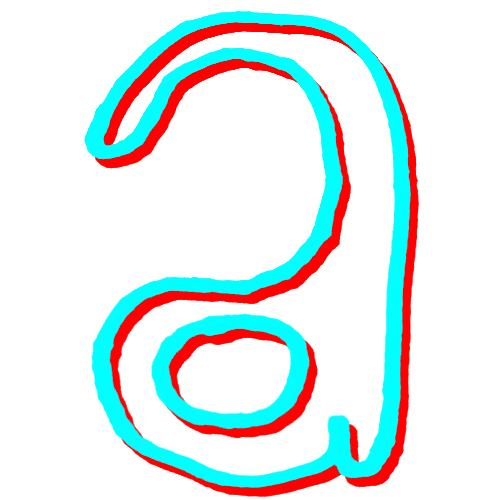On Bob Kaufman’s “Unholy Missions”
To Bob Kaufman, the task of a scientist and a poet is the same: to test various possibilities within a system, see what happens, and record the results. “Unholy Missions” operates on line-by-line tension of what is known and what is unknown, that nebulous eyeline between the earthly and the celestial: Los Angeles is equated with an extraterrestrial farce, a cigarette cherry with the sun, and mini putt-putt with the stars. Such obvious absurdity suggests that humanity's conquests are as ridiculous as the speaker's various desires, say, “to prove that Atlantis was a summer resort for cave men” (line 3). There simply are some things an earthling will never know or do, given our limited plane of vision—and to pretend to be able to do so is the ultimate "unholy mission."
Kaufman plays the foolish zealot crusading these ironic improbabilities, toying with a wish “to prove” the unthinkable, the irrational. If we were to map each line's “proof” onto a rudimentary graph, we might get a picture of what happens moments before this universe collapses in on itself. With each passing line, time is quickly destabilized: x variables include the millennium of Roman rule (6), the Paleolithic era (3), the beginnings of our solar system (7), and eternity via "once and for all" (8). These then are coupled with y variables of space both sublunary and celestial: the moon (1), the stars (2), the sun (7), the oceans (3), Heaven (5), the City of Angels (4). Yet, any rhetorical point which this poem plots disappears into a vanishing point of figurative possibility with Kaufman's poem acting as ground (0,0), a vortex where God, gods, aliens, and the “rich psychopaths” who consider themselves one of the above meet at the truth table of Kaufman's symbolic ill logic. The poet—1/2 priest, 1/2 scientist—baptizes them in heap of Ts and Fs, 0s and 1s, a lab coat draped over his liturgical vestments.
Kaufman offers us a different projective vision, as we cannot see far into outer space with the naked eye, nor can we see into the deep reaches of the past. This limitation, playfully figured as a satirized myopia, is not cause to lament, however, but rather a reason to laugh. Kaufman is laughing atthe hubristic missions of space exploration and with the folly of such a uniquely human approach to the outer limits of knowledge, our fundamental existential constraint. In this way, stupidity (for lack of a less pejorative term) paradoxically becomes a method of knowledge-making.
One immediate constraint is the impulse of human desire itself, seen here in the anaphoric of “I want,” which grinds down the vivid imagery into a kind of paste made of stardust. This litany of the speaker's desire acts as the tie that binds, the theory that strings: “I want to [infinitive]” (1-8). The poem's repeated syntax, too, calls for the speaker's self to do something about those desires. But of the eight infinitives, “to prove” occurs four times—a word that straddles the physical and mental, a kind of potential energy rather than activated reality. (“[T]o build” is the only overtly physical action within the poem. This is in keeping with the poet's pseudoscientific approach to what could be considered theorems or incomplete proofs.) The speaker's sanity is like Schrodinger's cat: he is both sane and crazy at the same time. As the poem's dominant infinitive verb "to prove" launches half of the poem's lines, the poet is less interested in artistry as he is theory, leveling the fields of poetics and science: both are able to illuminate the dark side of the moon with their specialties.
Of course, the speaker's “wants” are (probably) impossible in the real world, but on the page their wording suggests social commentary of his particular time. No one could “build miniature golf courses on all the stars,” yet the fact that the golf courses are “miniature,’ not “mini,” shows that the speaker's earthly and naked eye is his observational scale of choice: of course they would have to be miniature: a regular-size golf course wouldn't fit on a glowing speck in the sky! Even the idea of “all the stars” achieves the same sublunary perspective: the seemingly infinite celestial plane does in fact have a limit for earthly denizens. We can only see so far, it seems, or imagine the stars as sites of property development. So goes the folly of egomaniacal dominion.
Humanity here is shortsighted not just when looking up, but when looking back, too. History plays an important role, particularly lines 3, 6, and even regarding universal origins in line 7. Embedded among these historical nods is a covert class criticism: in conjuring the legend of “Atlantis,” Kaufman mixes “cave men” with the mythos of the now-underwater city. (But why shouldn't those ancient peoples have been one for leisure? Even those busy hunting for their next meal must have wanted a break now and then!) Class criticism also appears in the “exclusive sanitarium filled with rich psychopaths” (5)—quite prescient considering Jeff Bezos and Richard Branson have since breached space in self-funded rocket ships—though it’s still not likely they’ll being playing any “miniature golf” there, any more than Stockton Rush and company will be sipping spiked Arnold Palmers poolside in the lost city of Atlantis.
“Unholy Missions” was first collected in Solitudes Crowed With Loneliness (New Directions, 1965), and no doubt it was written with the previous decade’s space race in mind. The idea, then, of an “anonymous crater” would've been laughable, as the two competing world powers were rushing to leave no moonrock unturned. Notable, too, is the speaker's absence of specificity regarding how they'd like to be buried. Dead—or alive? Is this an extraterrestrial death wish or simply another desire for the eponymous solitude of the collection? The poem's title “Unholy Missions” suggests both missions to space, as well as a hard allusion to those “holy” missions of Christianity. Perhaps Kaufman considered both unholy. Perhaps the implication is that these manmade notions of religion are as manmade as our idea, not the reality, of space.
Space (in any capacity) acts as conceptual counterpoint to Kaufman’s images grounded in planetary earth. Each of the poem's first seven lines can be generally labeled as Earth, Space, or both: Space (“moon”), Space (“stars”), Earth (“cave men”), Both (“Los Angeles”), “beings on a... planet”), Both (“Heaven”; “rich psychopaths”), Earth (“Roman children's magazine”), Space (“sun”). The eighth line—“I want to prove once and for all that I am not crazy”—resists the temptation to balance the scales with the Space label, and rather comes crashing down from outer space not to earth, per se, but to the self which is composed of both realms. The poem's structure mirrors the Big Crunch hypothesis of the universe's potential end: in an expansive state triggered by the Big Bang, it collapses in lines 4-5, only to re-Bang back out into a fresh new universe in lines 7-8, one where the logic of poetry takes precedent.
The poem's final line is self-contained. No other being is involved except the speaker’s self via “I.” The question, if not to no one, or to space, becomes: prove “I am not crazy” to who, exactly? To himself? His poetic audience? Or society at large? The phrase “once and for all” is actually a shortening of a phrase popularized in the 1400s: “one time and for all time,” according to the Oxford English Dictionary. [1] For this universe or the next iteration or the next. The implication is a desire for a definitive truth that cannot be marred by circumstance or multiverses (pun intended): precisely what any rocket scientist or poet alike in their right mind is after. Mission accomplished.
Notes
[1] Oxford English Dictionary, s.v. “once, adv., conj., adj., n., sense P.3.b”, September 2023.
Works Cited
Bob
Kaufman. Collected Poems of Bob Kaufman.
City Lights Books, 2019.


